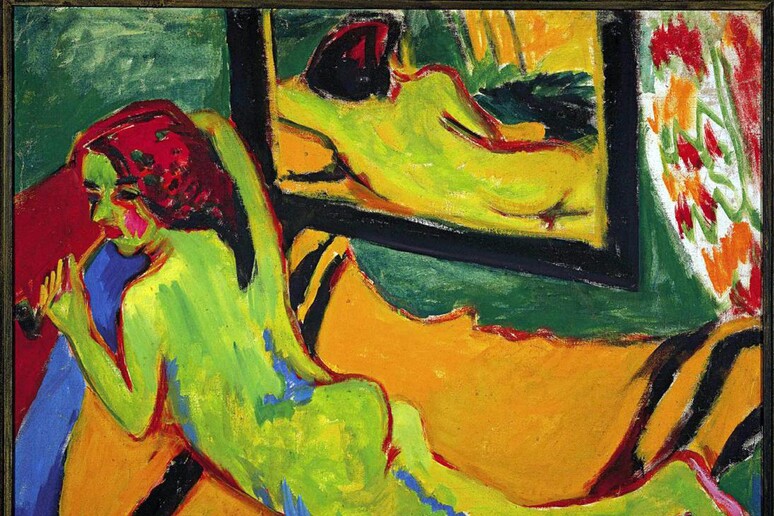An exhibition of roughly 150
works of German Expressionism will be at Genoa's Palazzo Ducale
from March 5 until July 12.
Paintings, prints and drawings on loan from Berlin's Brucke
Museum document the artistic revolution and the ferment that
swept Europe towards WWI on the 100th anniversary of Italy
joining the conflict in 1915, with many works by the movement's
founders.
The exhibition, entitled 'From Kirchner to Nolde. German
Expressionism 1905-1913' was curated by Magdalena Moeller,
director of the Berlin museum with which Palazzo Ducale worked
closely for the exhibition.
The works chosen illustrate the vision of radical renewal
held by a group of artists determined to build a bridge between
classical Neoromanticism and an entirely new style. The term
'German Expressionism' owes its origins mainly to the foundation
of the 'Die Brucke' ('The Bridge') movement by Fritz Bleyl,
Erich Heckel, Ernst Ludwig Kirchner and Karl Schmidt-Rottluff in
Dresden on June 7, 1905.
The movement took its inspiration from the lives of the
artists, who worked to extract subjective elements from the
reality surrounding them - the metropolis, street life and the
circus - to stimulate reflections on human solitude, alienation
and immorality. Incisiveness and an acidic, accentuated
chromatic range soon become its distinctive features.
While the impressionists sought to immobilize an impression
on their canvases and focused on the external reality,
expressionism reveals emotion and sensuality, trying to achieve
an effective expression that can stimulate, impress and involve.
A contemporary of French Fauvism, the movement dealt with
such issues as existential unease, anguish and criticism of
bourgeois society's hypocrisy. This translated into works of art
with minimal, simplified lines (using Van Gogh, Gauguin, Munch
and Matisse as models) and the tendency to alter space and
prospective, drawing clear, cutting edges that are often
highlighted with black strokes and the use of strong,
contrasting colors. The human figure often dominates the
composition in the form of a nude, but there are landscapes,
city scenes and interiors as well.
The Genoa exhibition takes into account many different
strains of the movement through a careful selection of works,
including oil paintings on canvas and tempera on cardboard, wood
carvings, charcoal drawings, pastels and watercolors on paper,
lithographs and etchings.
It begins with Kirchner, a central painter of the movement,
and several of his works, such as 'Artist Marcella' (1910),
'Nude Woman Combing Her Hair' (1913), 'Self-Portrait' (1914) and
watercolors, pastels and drawings of urban contexts. There are
also street scenes, 'At the Corner of Uhlandstrasse in Berlin'
and 'Wittenbergplatz, Berlin' - both from 1915 - in which
streets and squares are immortalized and filtered through the
deforming lens of social polemics.
Erich Heckel's paintings in the exhibition include 'Girl
Playing the Lute', 'Cistern in the Shape of a Bull' and the
'Young Man and Girl', from 1909. The rich, modulated colors of
Max Pechstein - such as in the 'Yellow and Black', 'Forest near
Moritzburg', 'Laying Couple' and 'Dance - reveal a less heated,
violent interpretation compared with poetic expressionism.
From Karl Schmidt-Rottluff there are instead the
extraordinary portraits 'Girl at her Toilet' and 'Thoughtful
Woman' (1912), as well as landscapes with impressionist echoes
and the 'Husband and Wife' and 'Courtesans after a Bath'
etchings.
Emil Nolde, who alongside Kirchner was the founder of the
movement and perhaps also the most consistently expressionist,
is represented by works such as 'Villagers' (1911), which is
strongly reminiscent of caricature, and 'Two Exotic Figures',
clearly influenced by African primitive sculpture, 'White
Trunks' and 'The Jager Family Home in Alsen', in which the
tempest of colors does not hide the refined quality of the scene
itself.
ALL RIGHTS RESERVED © Copyright ANSA











